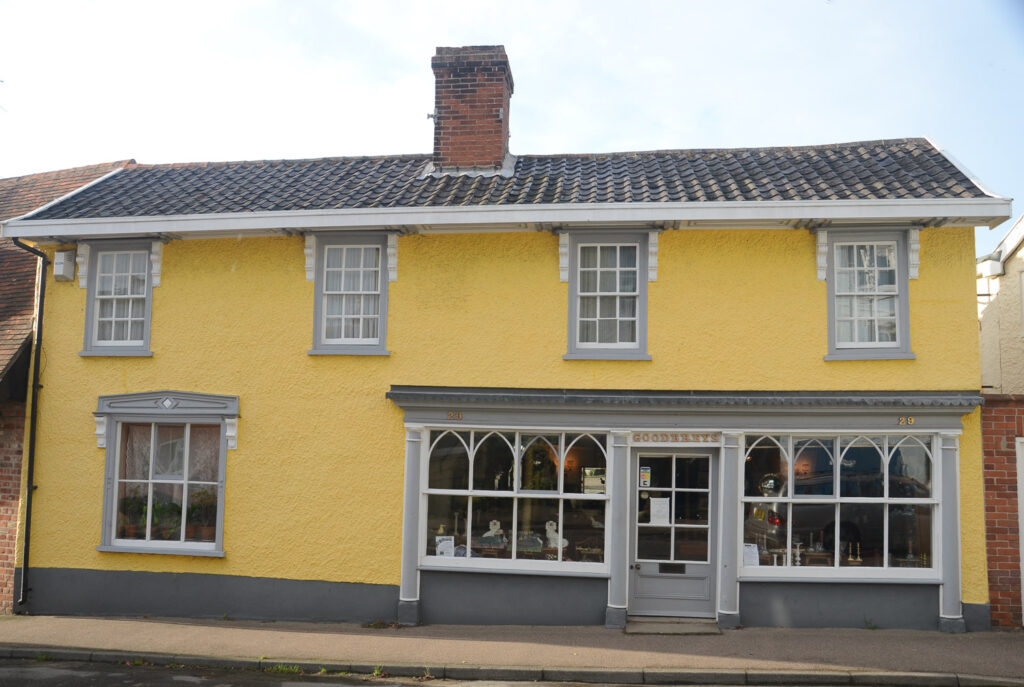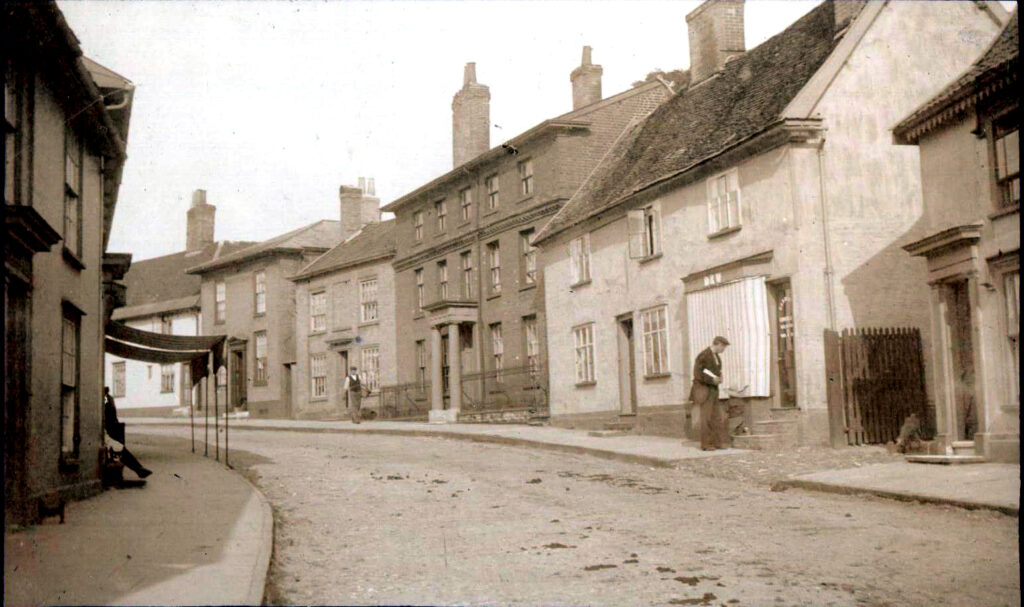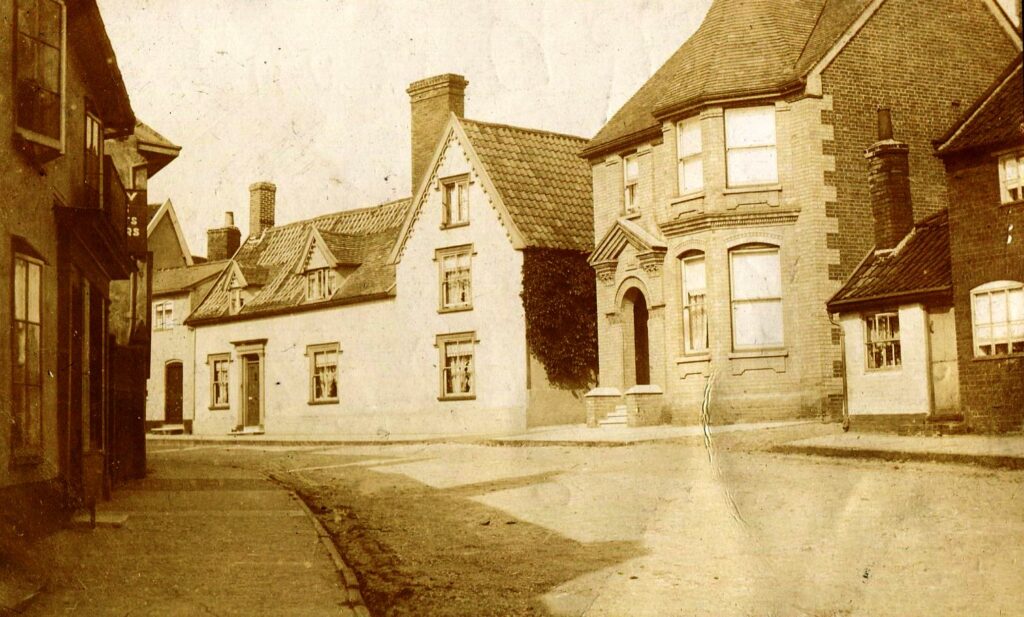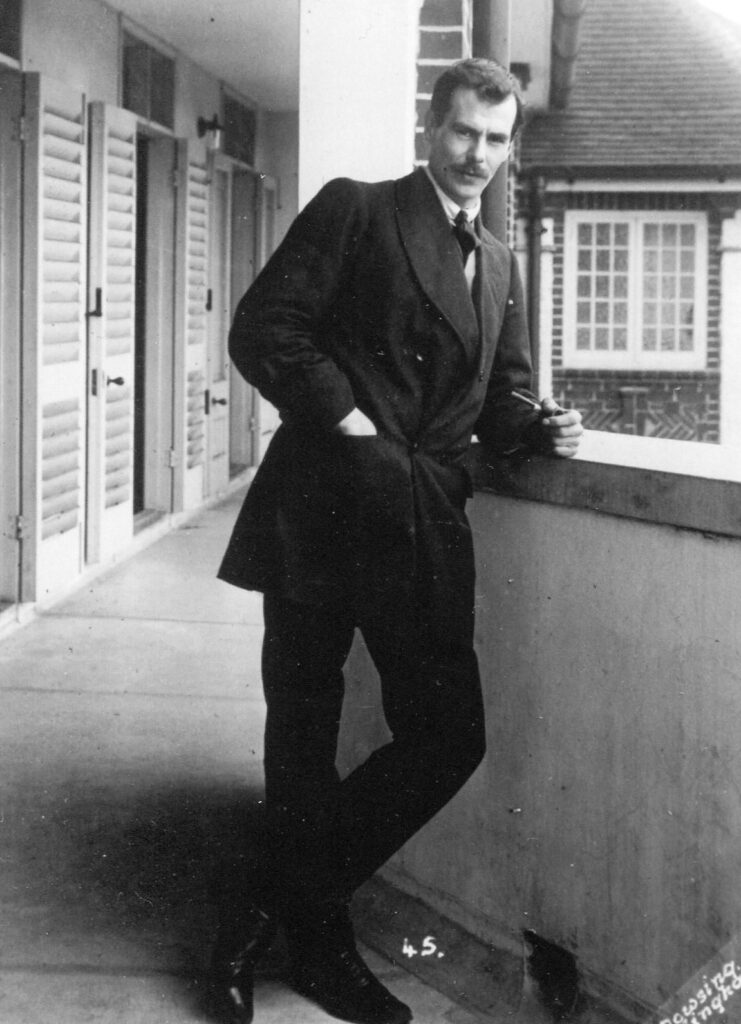This article is by Simon Garrett, drawing on information from The Journal of the Framlingham & District Local History & Preservation Society1

The Double Street of the 21st Century is a quiet residential street. The last shop in the street – an antiques shop near the top of the street – closed in recent years.
However, the Double Street of 200 years ago was busy, bustling and commercial. There are clues to be seen: many of the houses have large “shop window” fronts, some have two street doors, or passageways through to the back.
As recently as the years between the two World Wars in the 20th century, there were two inns, a tailor, a baker and a photographer recorded as trading in the street.

But go back another hundred years and Double Street was very different – and more youthful than the population today. Less than 10% of residents were recorded as aged over 60, whereas today it is over 30%. There were as many as 50 dwellings (today it’s around 30) as some of today’s single dwellings were subdivided.
At the time of the 1841 census, Framlingham was growing (as it is now). The town needed residential traders for all everyday needs, especially as transport to larger towns was more limited and time-consuming. Double Street provided most needs. There were butchers, bakers, grocers, shoemakers, dressmakers, tailors, blacksmiths, a wheelwright and a bookseller. There was more than one school, a surgeon and a lawyer. All in Double Street! At least 22 businesses were operating in the street according to Robson’s 1839 Directory of Suffolk.
The street was not only busier and noisier, but probably a bit smelly. A number of the houses would have horses and carts kept on their property, and probably domestic animals such as chickens and pigs. A pigsty is shown on maps of the time, and a cowshed was advertised to let in 1908. The street was also recorded as rather dirty.
As the 19th century progressed, traders came and went. Mid century a gunmaker, cabinet maker and builder were recorded. By then transport to and from Framlingham was improving. Roads were better, and it became possible to travel to London in a day. In a single day! Then in 1859 the railway opened, and residents could more easily contemplate shopping in Ipswich or even Norwich. Trade began to move away from Double Street to the newly developing west side of the town. The population of the town was growing, and the new Prince Albert Memorial College brought teachers and pupils. But this growth did not continue, and towards the end of the 19th century, the population of Framlingham was static. By the end of the century, the number of businesses in Double Street was below 15.

The last of the schools closed before the new century, which saw further decline to both the number of businesses and the population of Double Street. The street was changing to more residential, and at least one new house was built: for Samuel Carley, a grocer whose shop next to the Crown Hotel continued as a grocers into the 21st century. Just.

A photographer – Channing Fairhead Dowsing – had a business in Double Streed from around 1908 until the late 1920s2.
In 1937 there were eight traders, including two inns, a tailor, a baker and a boot repairer.
Gradually, the number of traders continued to decline until the last closed this century.
In modern times, Double Street residents often create their own Advent Calendar in December, with displays in front windows of many houses in the street. See these references 3 and 4 . They did so again in 2024.
References
- “A Reflection of Changing Times:
Life in Double Street Framlingham 1841–1939″, Gill Hackman, The Journal of the Framlingham & District
Local History & Preservation Society, 7th series no. 7, Oct 2018 (see Journals and Newsletters). ↩︎ - A number of Channing Dowsing’s photographs can be seen in the Framlingham Historical Photo Archive. ↩︎
- https://www.eadt.co.uk/things-to-do/21268606.advent-calendar-street-lights-framlingham/ ↩︎
- https://www.bbc.co.uk/news/uk-england-suffolk-30297061 ↩︎
